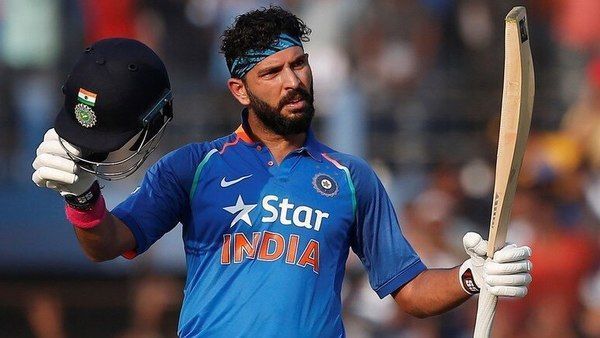
Yuvraj Singh: Career in Numbers

Yuvraj Singh, this is one name that resonates well with some of India’s biggest moments in the 21st century. You name the moment (almost every moment if not all), and you see the name, Yuvraj Singh.
Be it the six sixes against England or the manic semi-final knock against Australia – both in the 2007 World T20 in South Africa. Or be it the 2011 World Cup when he consistently churned out performances to eventually help India win the title after 28 years. Or be it his acrobatic brilliance in the field against South Africa in the 2002 Champions Trophy semi-final. Or be it on numerous other occasions when India needed him and he delivered. Yuvraj Singh was always there.
It is one name that will go down in Indian cricket history as one of the greatest. He will go down as one of the biggest match-winners India has ever produced, especially in white-ball cricket. He was much beyond what the numbers and the stats suggest.
The game is driven by numbers and we are bound to look at them at every juncture. With Yuvraj Singh calling time on his international career, we look back at his career in numbers.
Yuvraj made his international debut for India in 2000 in a Champions Trophy game in Nairobi. And since then, he has gone on to don the India blue a total of 399 times in international cricket (40 Tests, 301 ODIs and 58 T20Is). He played three more international games (ODI matches) for Asia XI which takes his tally beyond 400 matches.
One of India’s biggest match-winners in white-ball cricket
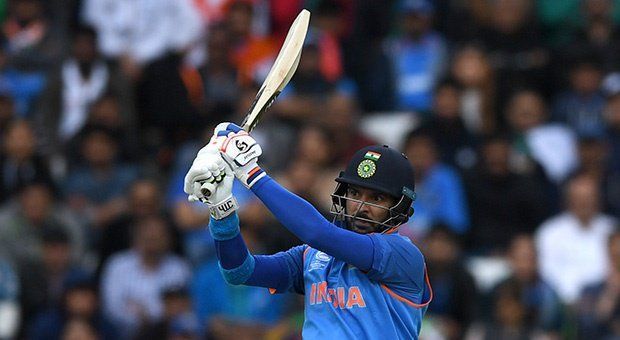
Yuvraj Singh scored 8701 runs in ODI cricket, out of which 8609 came for India. He averaged 36.47 in the 275 innings he batted for the Men in Blue. His 8609 runs put him seventh on the list of leading run-getters for India. He is also seventh on the list of most ODI hundreds (14) for India. He also scored 52 half-centuries which is the sixth most by an Indian in 50-over cricket. Yuvraj Singh is one of the nine players who have accomplished the double of 8000 runs and 100 wickets in ODI cricket. He is only the third Indian to do so as well. In T20Is, he scored 1177 runs at an average of 28.02 and a strike-rate of 136.38. He scored eight half-centuries and was one of India’s early T20 stars.
The Chandigarh-born cricketer loved the limelight. He won 27 Man of the Match awards in ODI cricket which the 13th most in the history of the game and fourth highest by an Indian. In T20Is, he won the award seven times putting him third on the list of most man of the match awards by an Indian in the shortest format. Yuvraj won the Man of the Series five times in his career which is the second highest by an Indian and fifth highest overall in world cricket in ODI history.
The man for the big stages
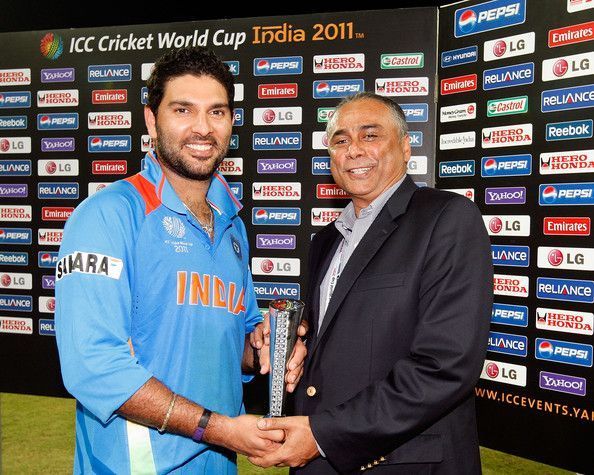
Yuvraj Singh has a wonderful record in multi-nation tournaments and ICC tournaments, in particular. In ICC’s 50-over tournaments, the Punjab southpaw averaged almost 45 while amassing 1114 runs. He relished the big stage. In fact, he averaged 52.71 (523 runs) in World Cup cricket which is way higher than his career average.
He was the catalyst in India’s World Cup win in 2011 as he scored 363 runs and picked up 15 wickets and was named the Player of Tournament. Yuvraj became the first man in World Cup history to accomplish the feat of scoring over 300 runs and picking up in excess of 15 wickets. Overall, it was just the second time a player had accomplished the feat.
Yuvraj was also the main man in India’s 2007 World T20 triumph. He may not have ended up as the leading run-getter or be consistent throughout the tournament. But when it mattered the most, Yuvraj stepped up. He struck six sixes in an over (against Stuart Broad) to become the first man to achieve the feat in T20 cricket. In the process, he reached the 50-run landmark in a mere 12 balls, setting the record for the fastest half-century in international cricket. That set the platform for India’s win and put them on course for a semi-final spot (a loss would’ve ended their campaign). He then set the stage on fire in the semi-final as he struck a blistering 30-ball 70 against the mighty Aussies, driving India to the final.
His performance in the 2002 Champions Trophy semi-final was also an underrated one. He struck a vital 62 before his brilliance in the field helped India come from behind and register a famous win. The Punjab all-rounder took some fabulous catches (three of them), he dived around and converted half chances which turned the game in India’s favour.
A middling Test career
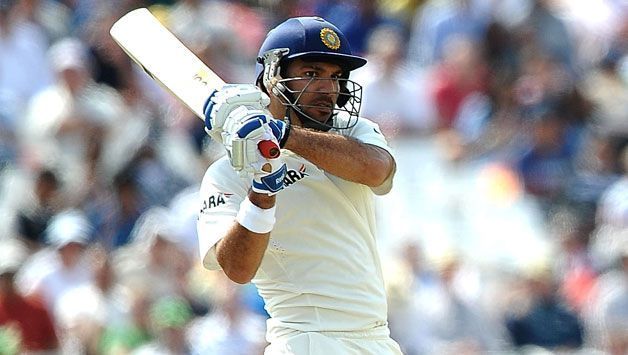
Yuvraj Singh’s Test career never really took off. He played 40 matches in a Test career which spanned for almost a decade. He was constantly in and out of the side. He scored 1900 runs in 62 innings at a middling average of 33.92. He could muster 11 half-centuries and three hundreds. In fact, all three of his tons came against Pakistan.
A pie-chucker with the ball
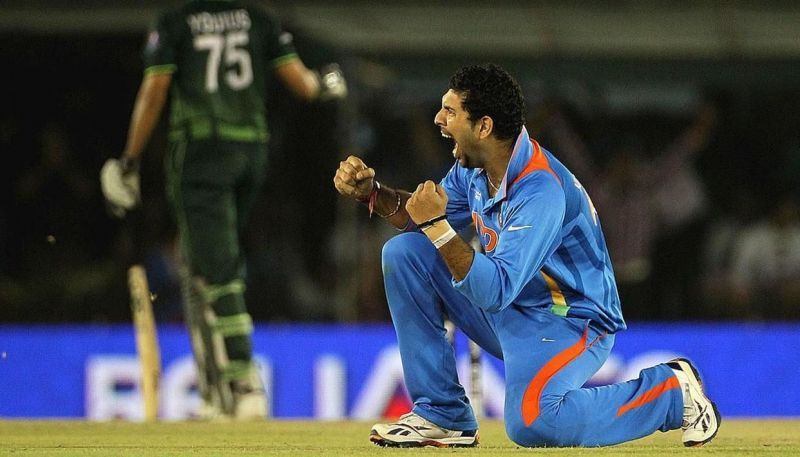
Yuvraj Singh’s ability with the ball was pretty underrated. He has taken close to 150 international wickets for India. He didn’t bowl a lot in Test cricket but with the white-ball, he was India’s man with the golden arm. He was the partnership breaker and more than useful part-timer. He proved his ability with the ball when he was India’s second highest wicket-taker in the 2011 World Cup – 15 wickets. He has taken 111 wickets in ODI cricket.
A career of two halves
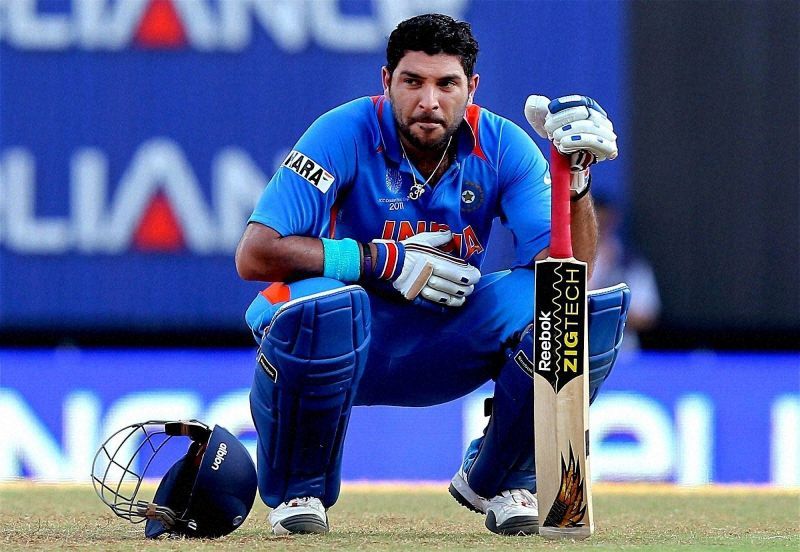
Yuvraj Singh’s career can really be put into two halves – pre and post cancer. The Punjab left-hander was diagnosed with a life-threatening disease post the 2011 World Cup win. However, he fought hard and returned to the field, back with 100% fitness.
However, he was not at his best once he returned. He amassed over 10,000 international runs before his fight with cancer. He averaged almost 37. However, once he returned his average dropped – 26.22 to be precise. He wasn’t great while fielding either. Moreover, his bowling almost stopped as well. Hence, he was in and out of the Indian side and he really struggled in the latter half of his career.